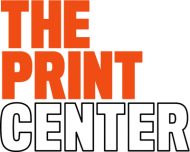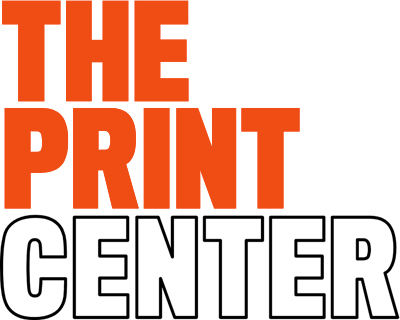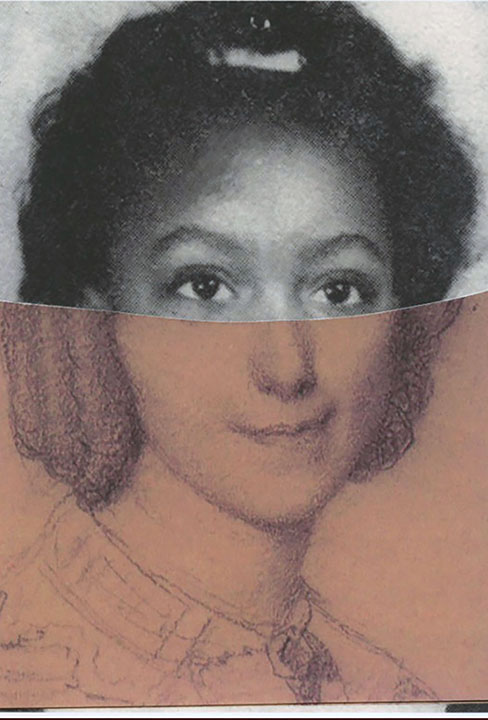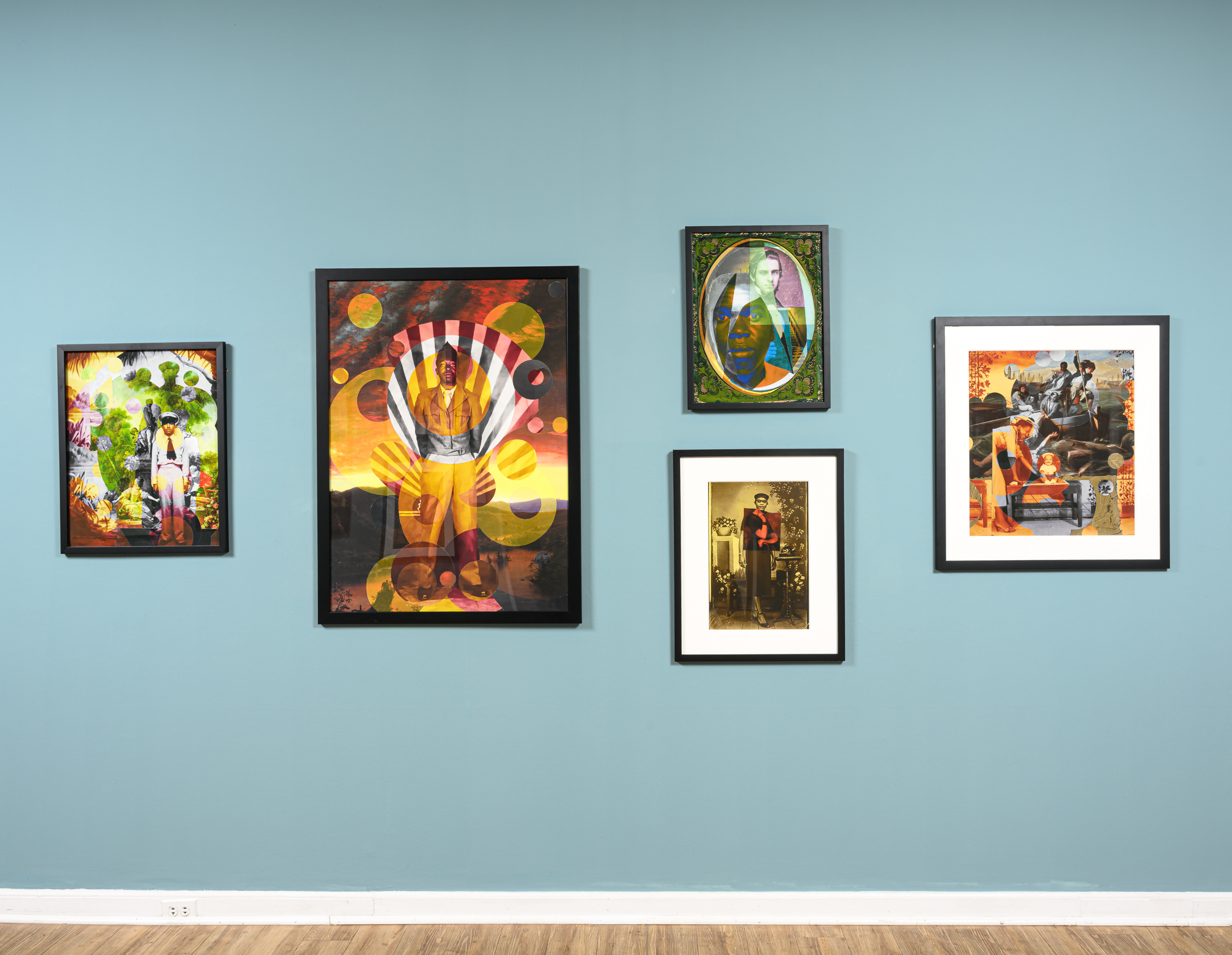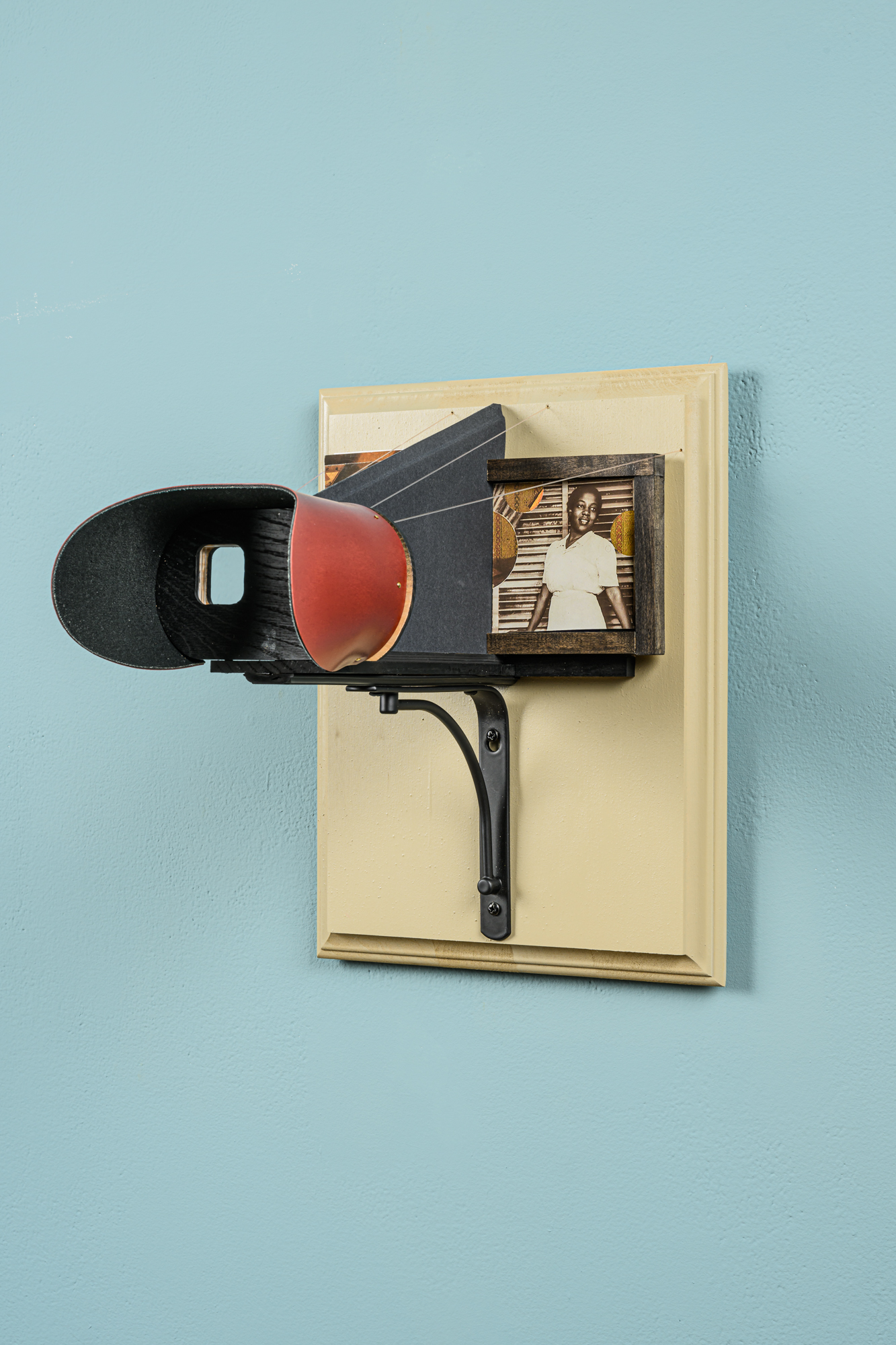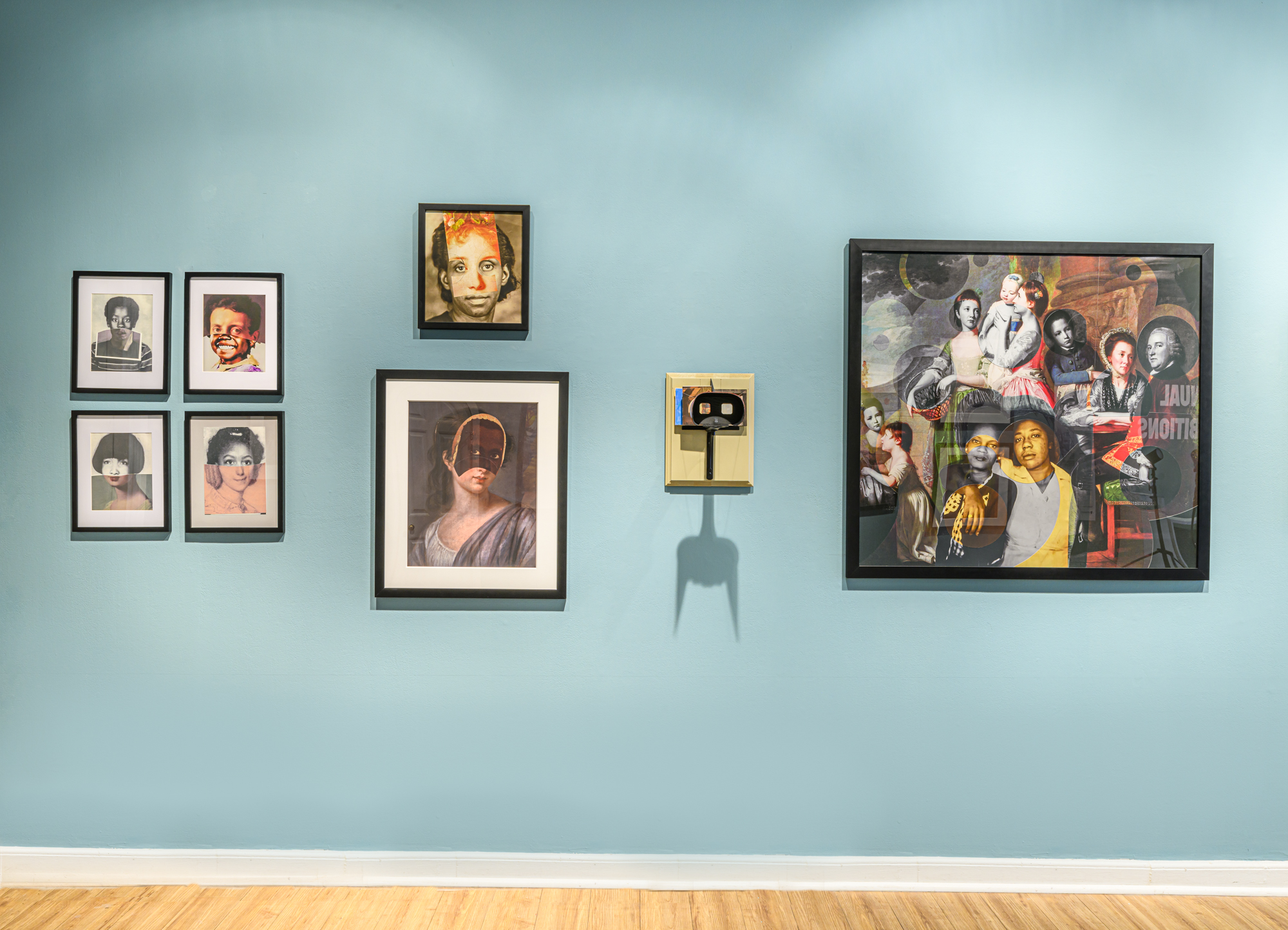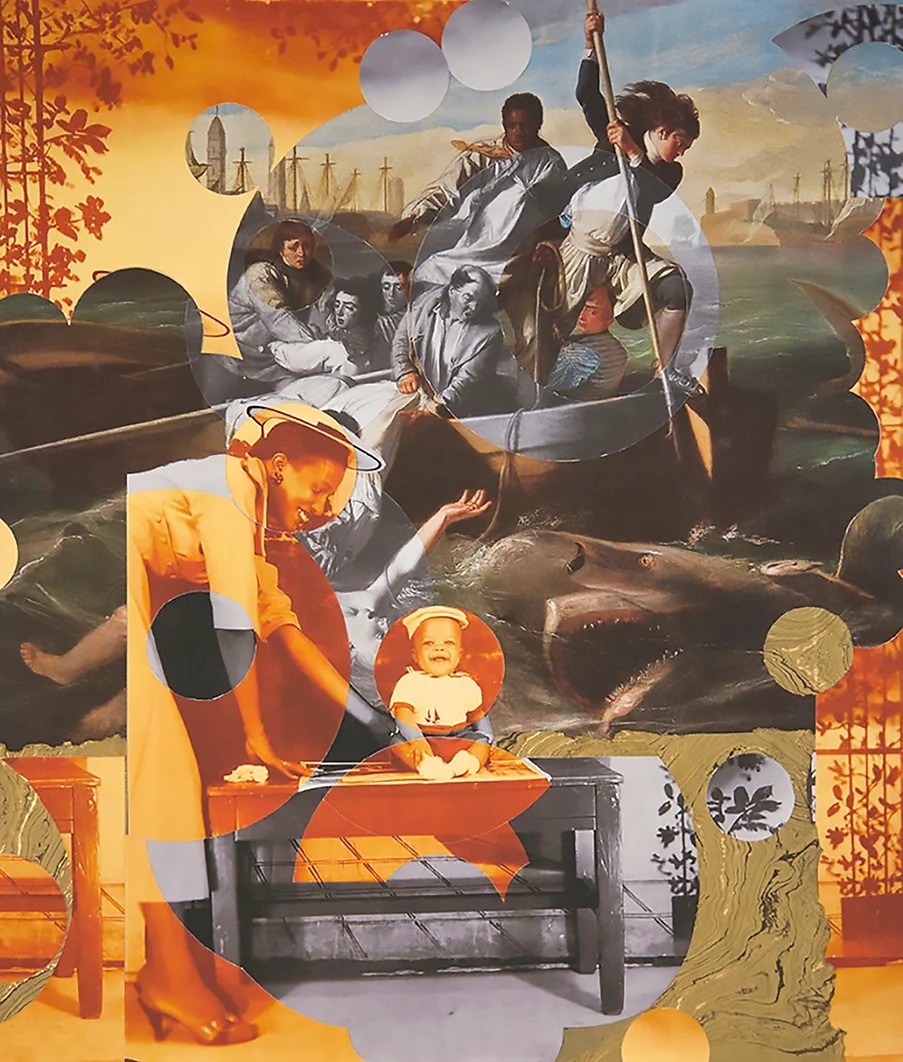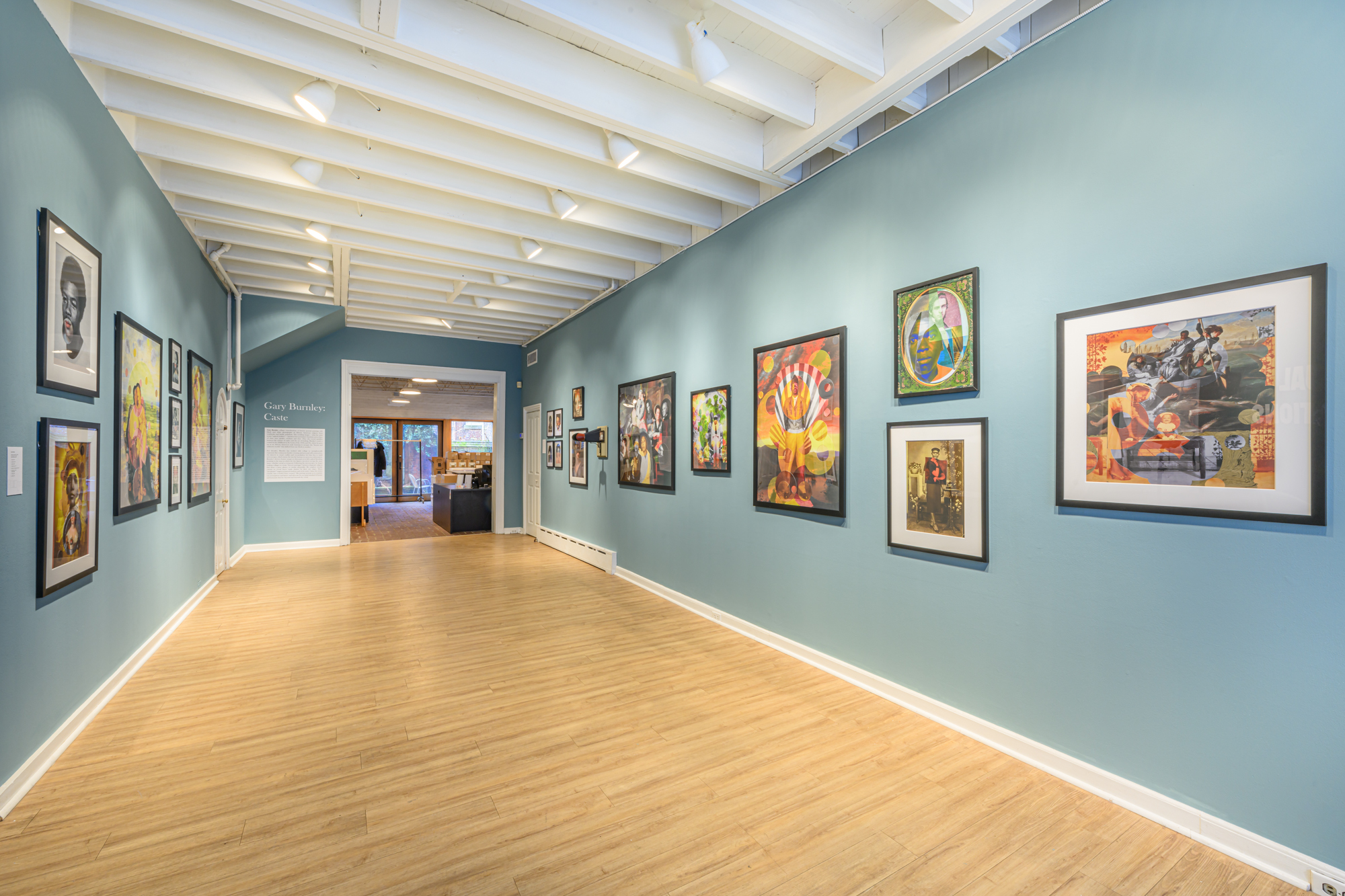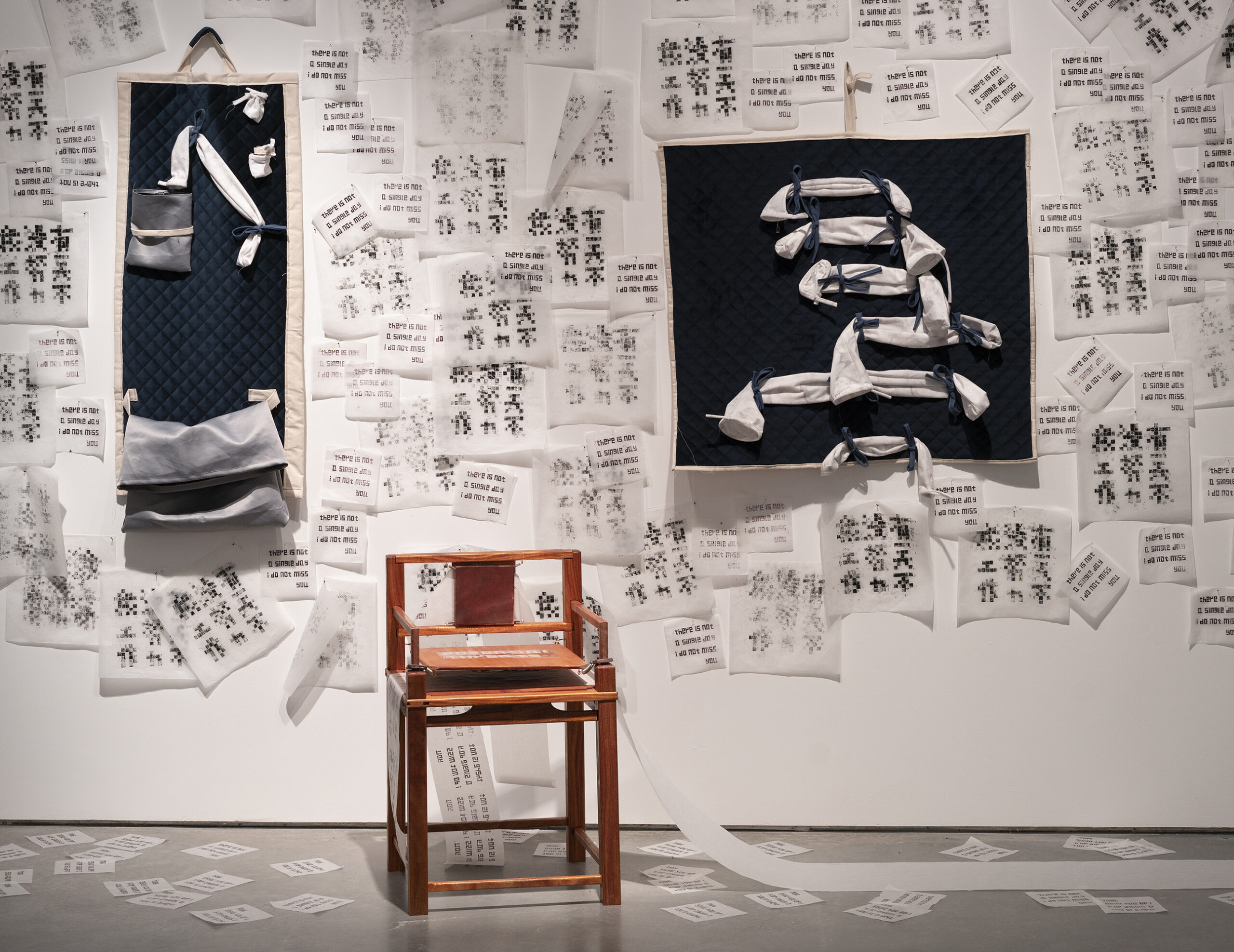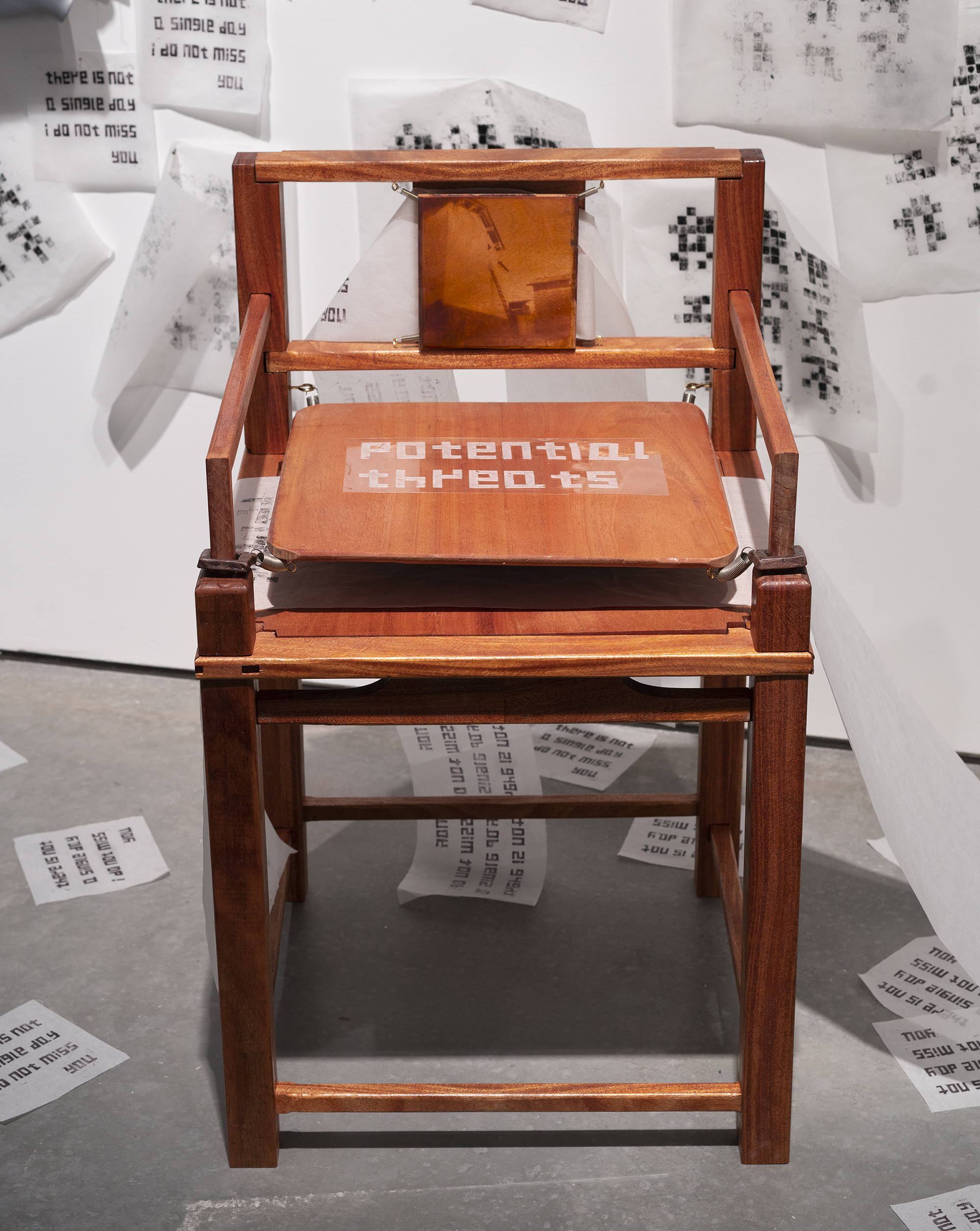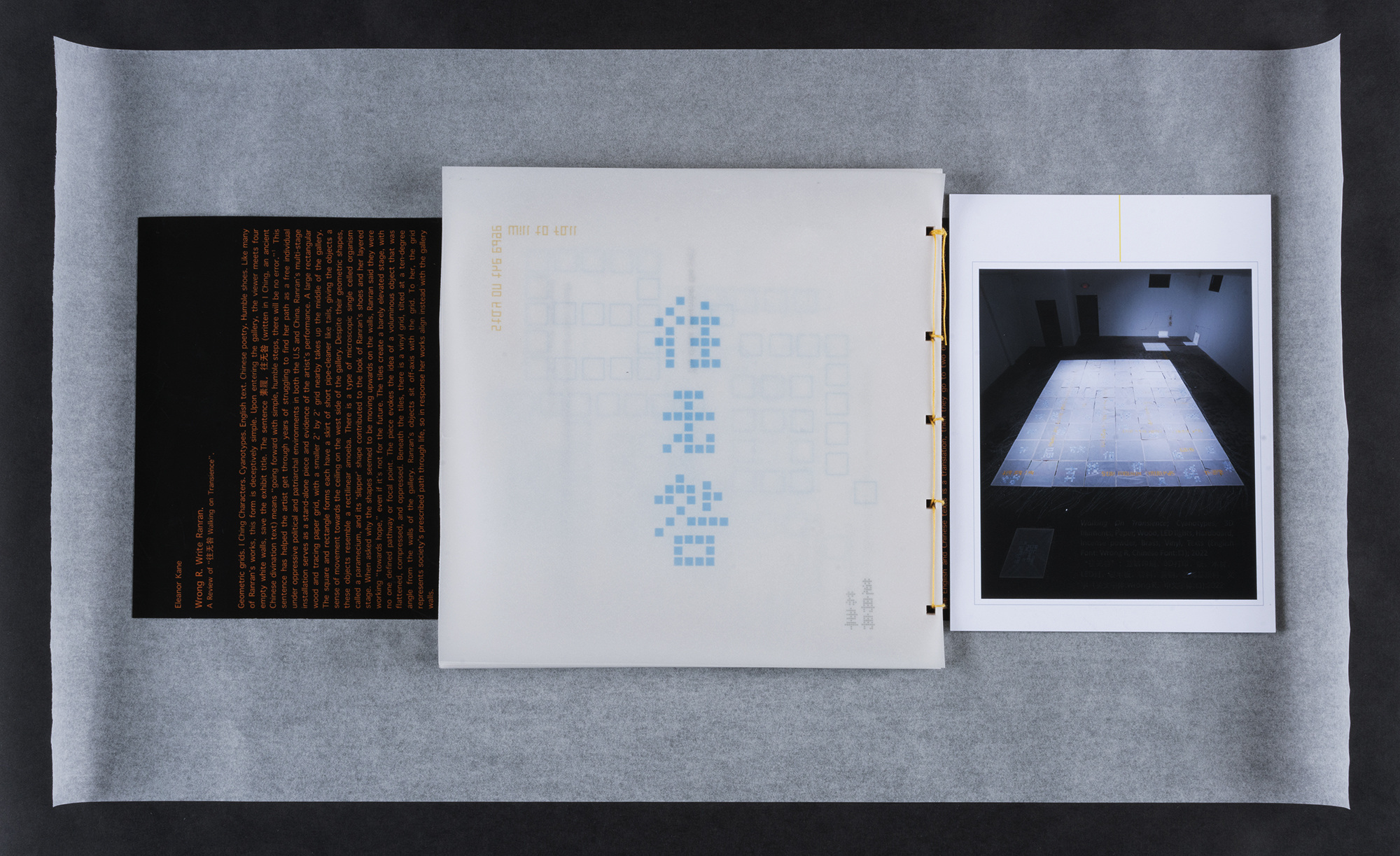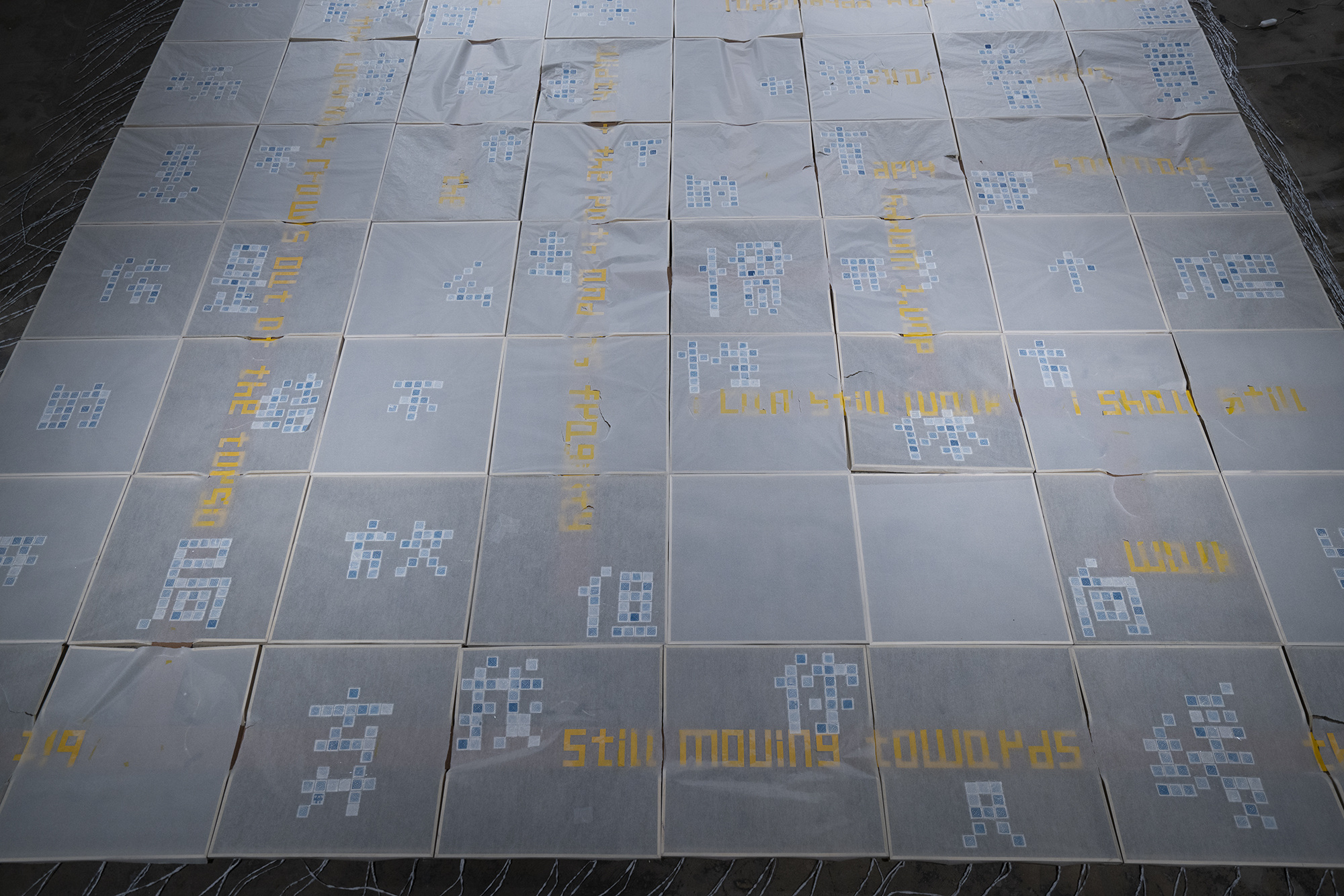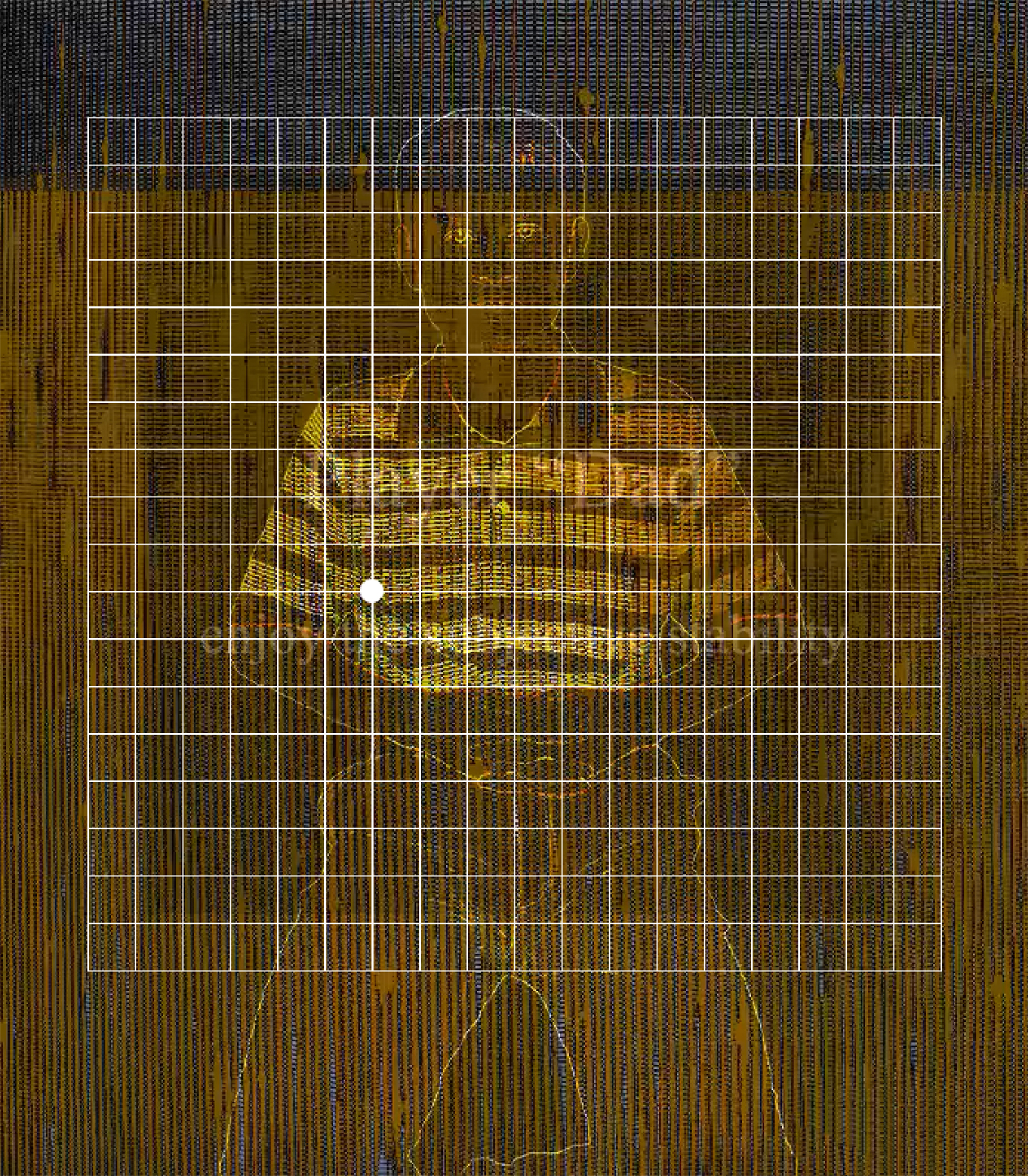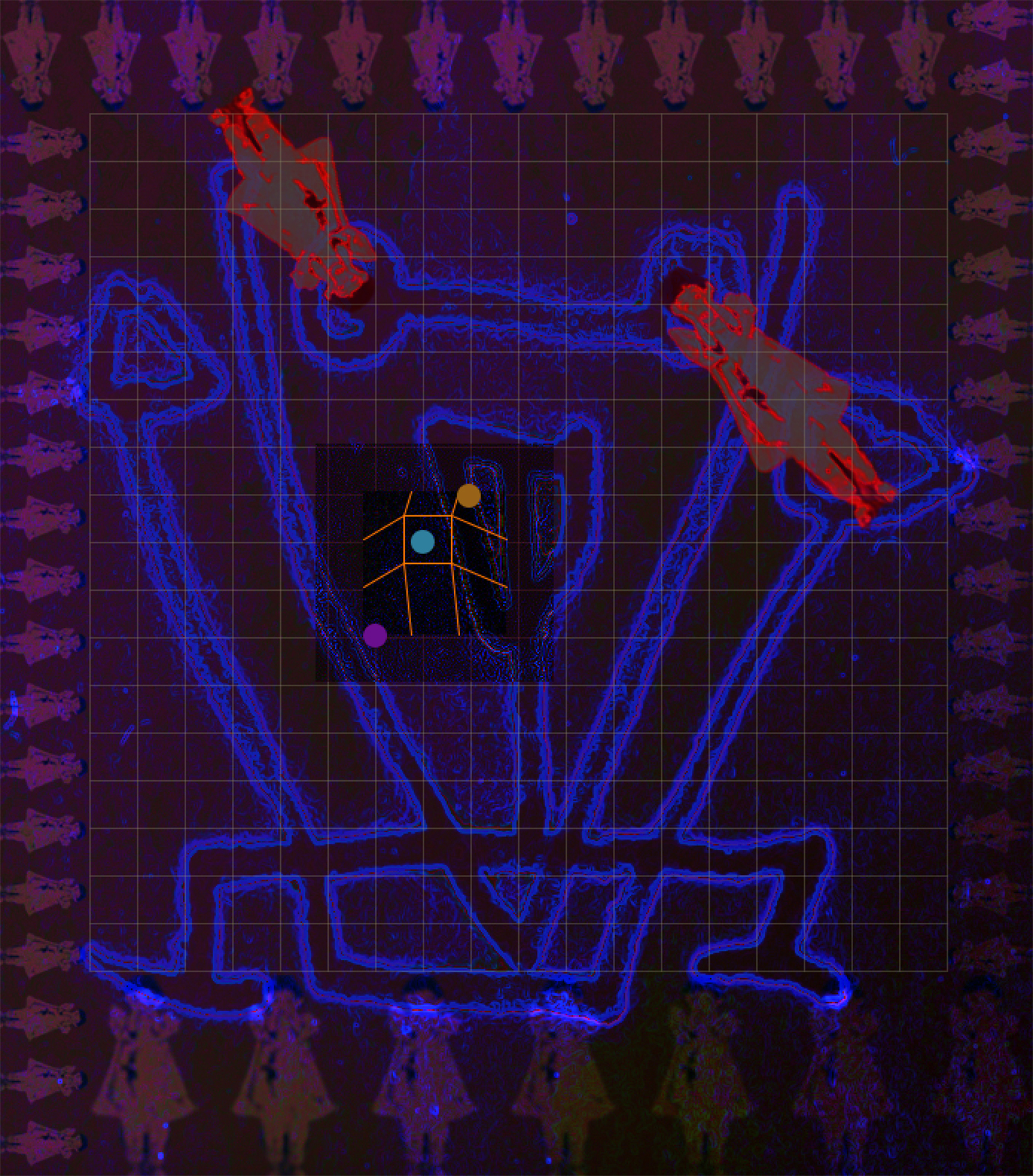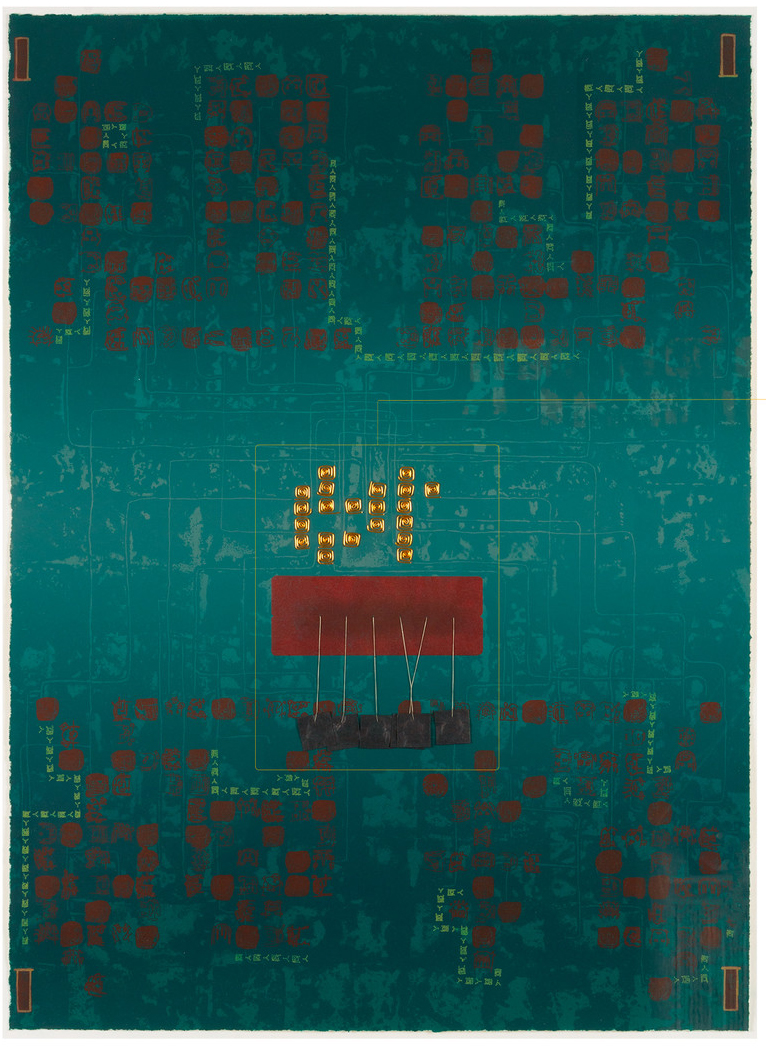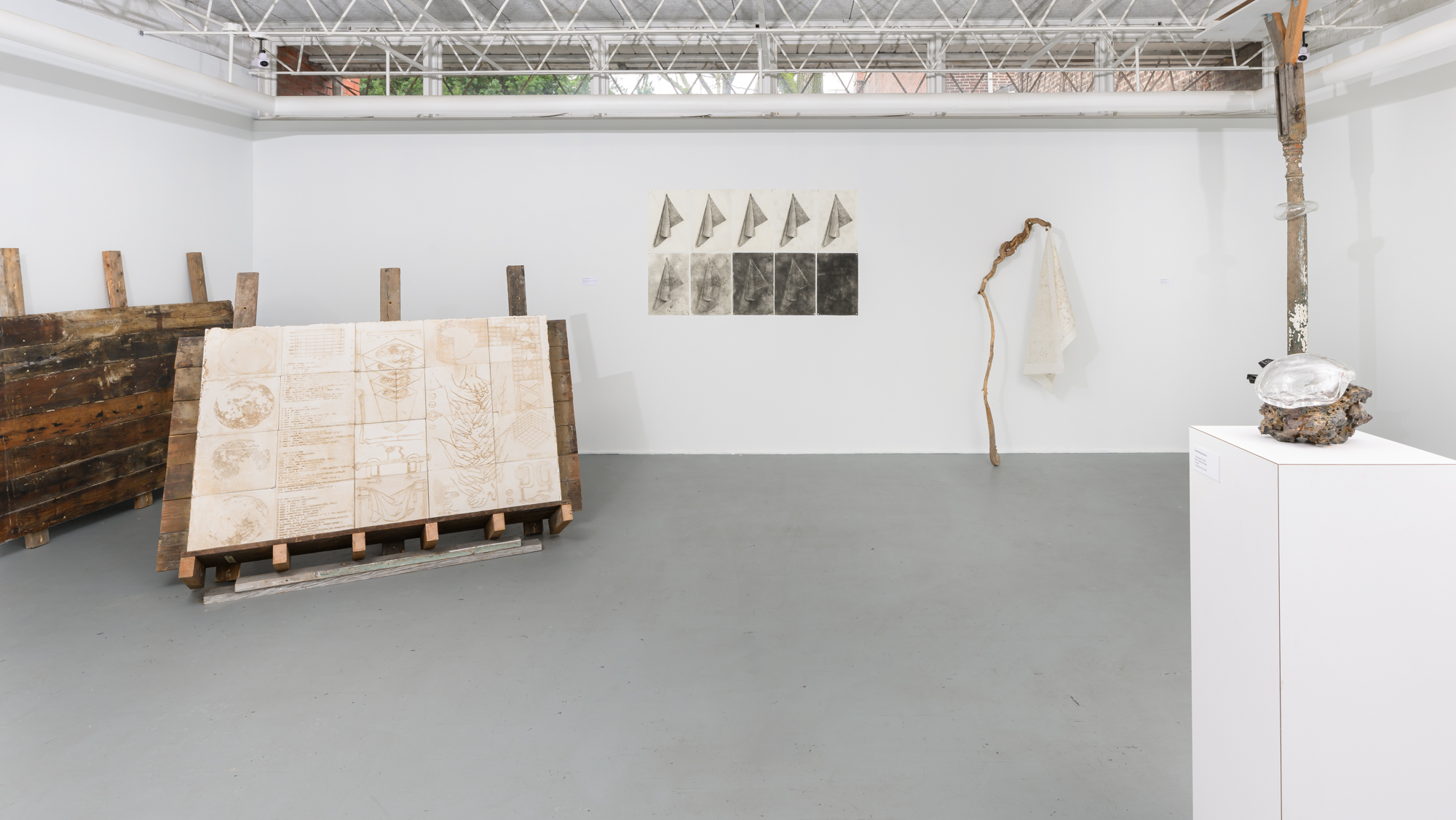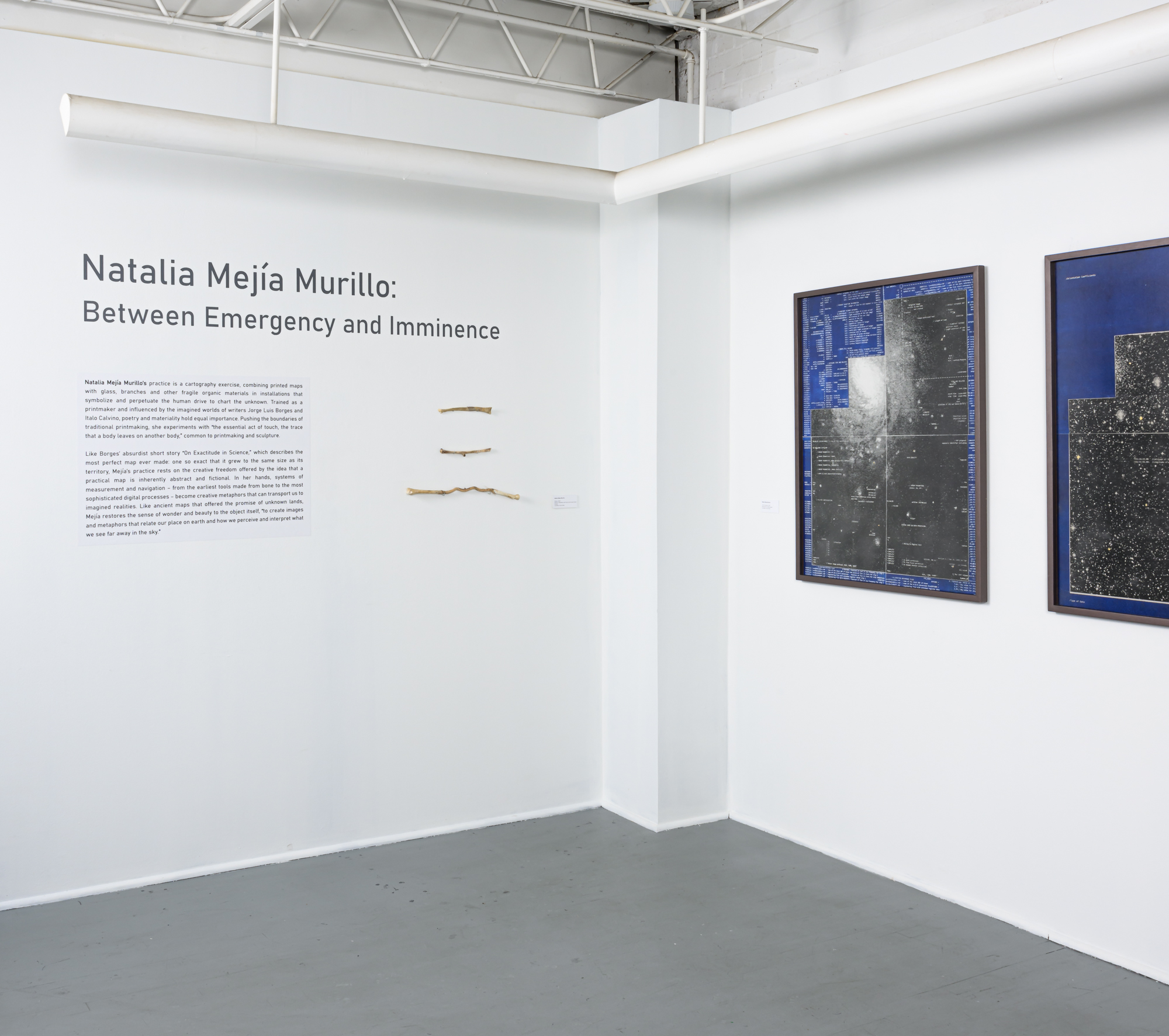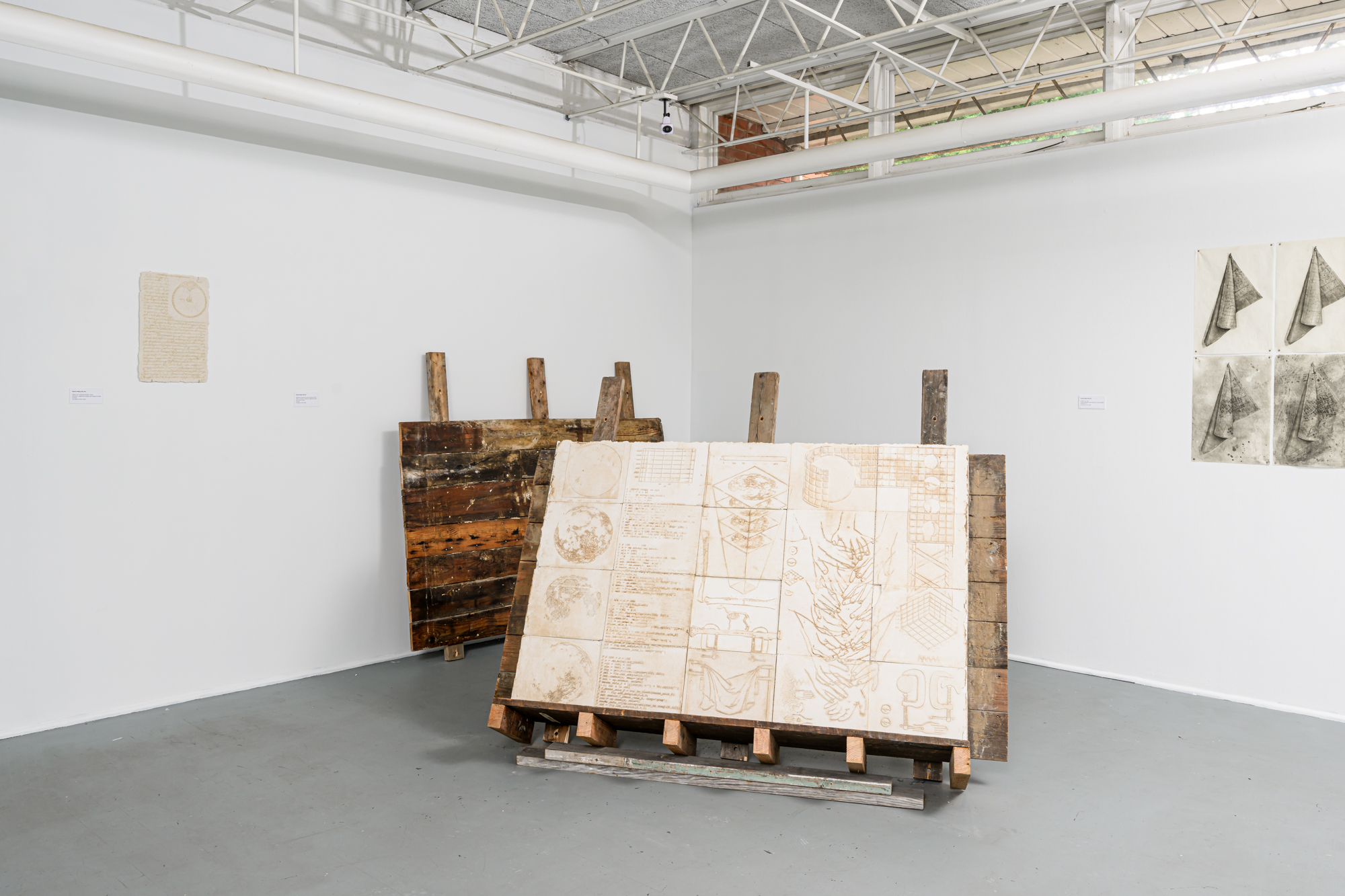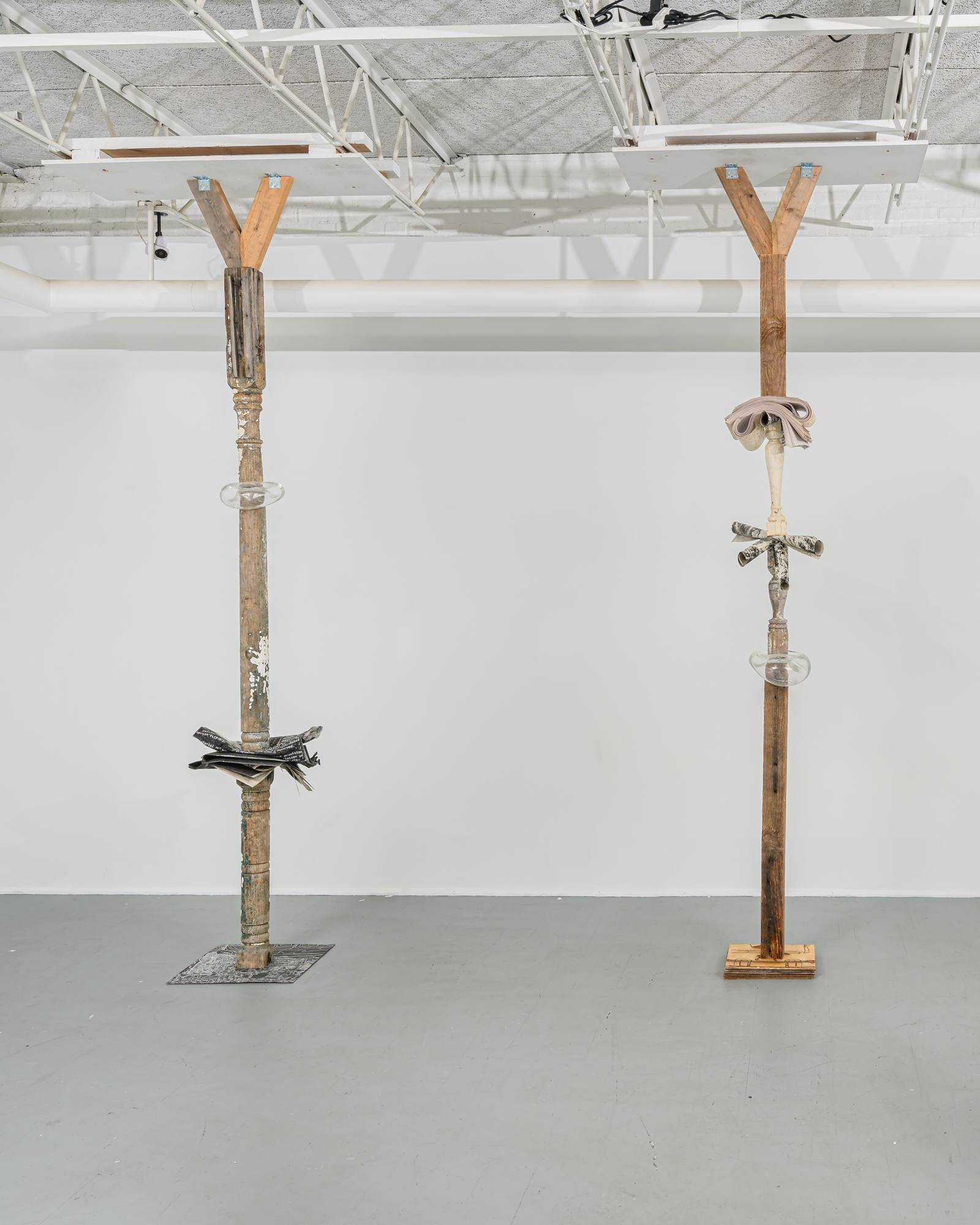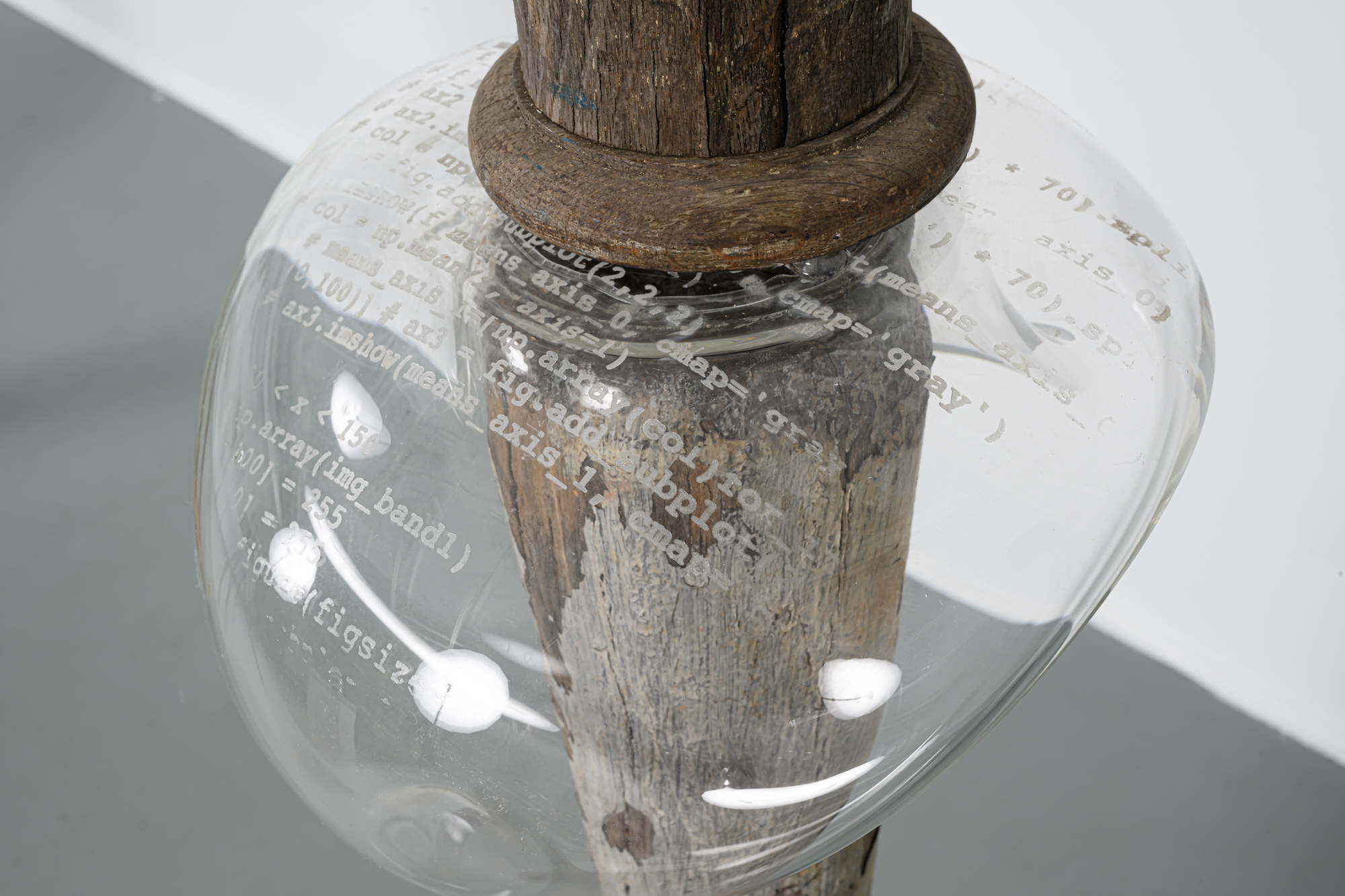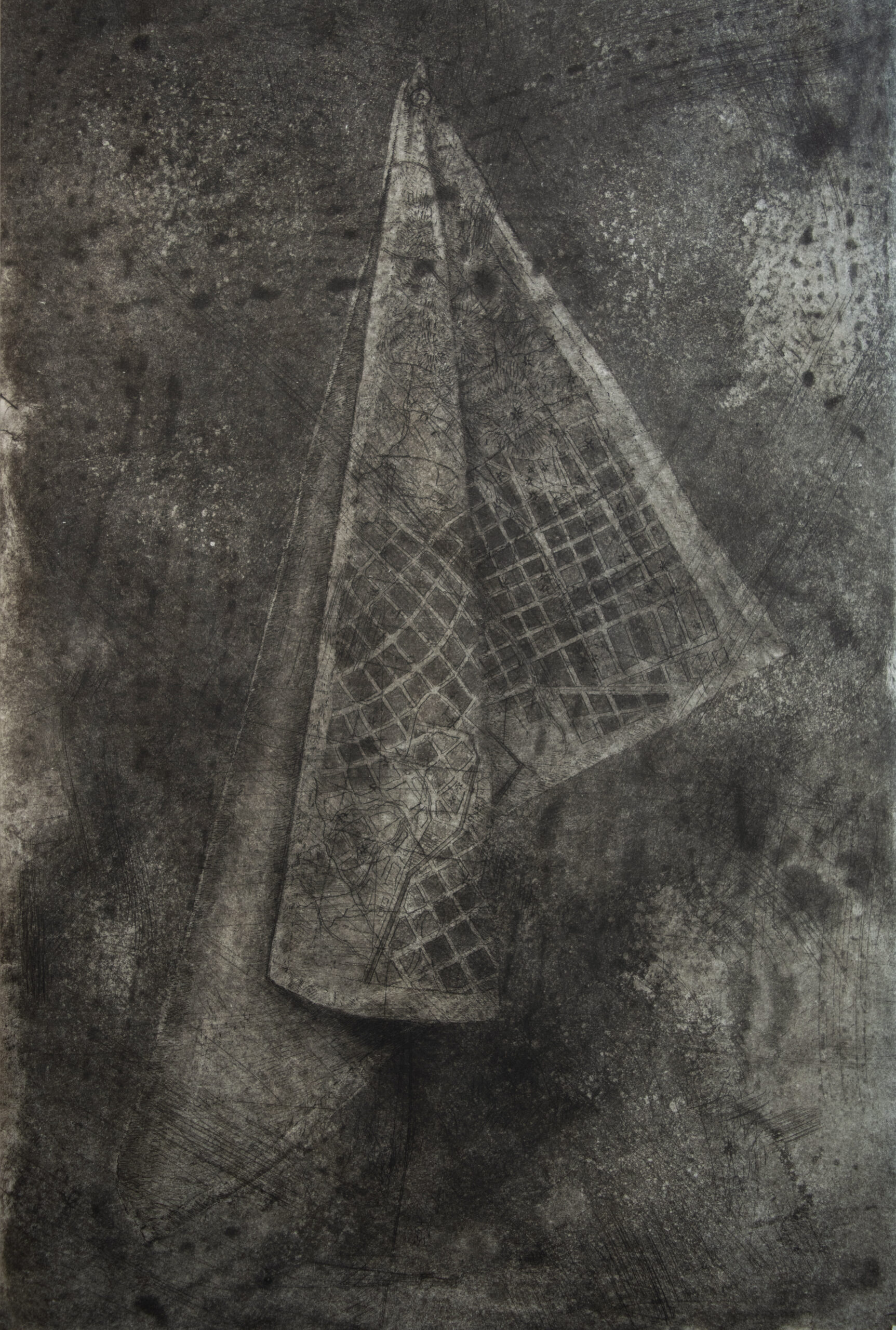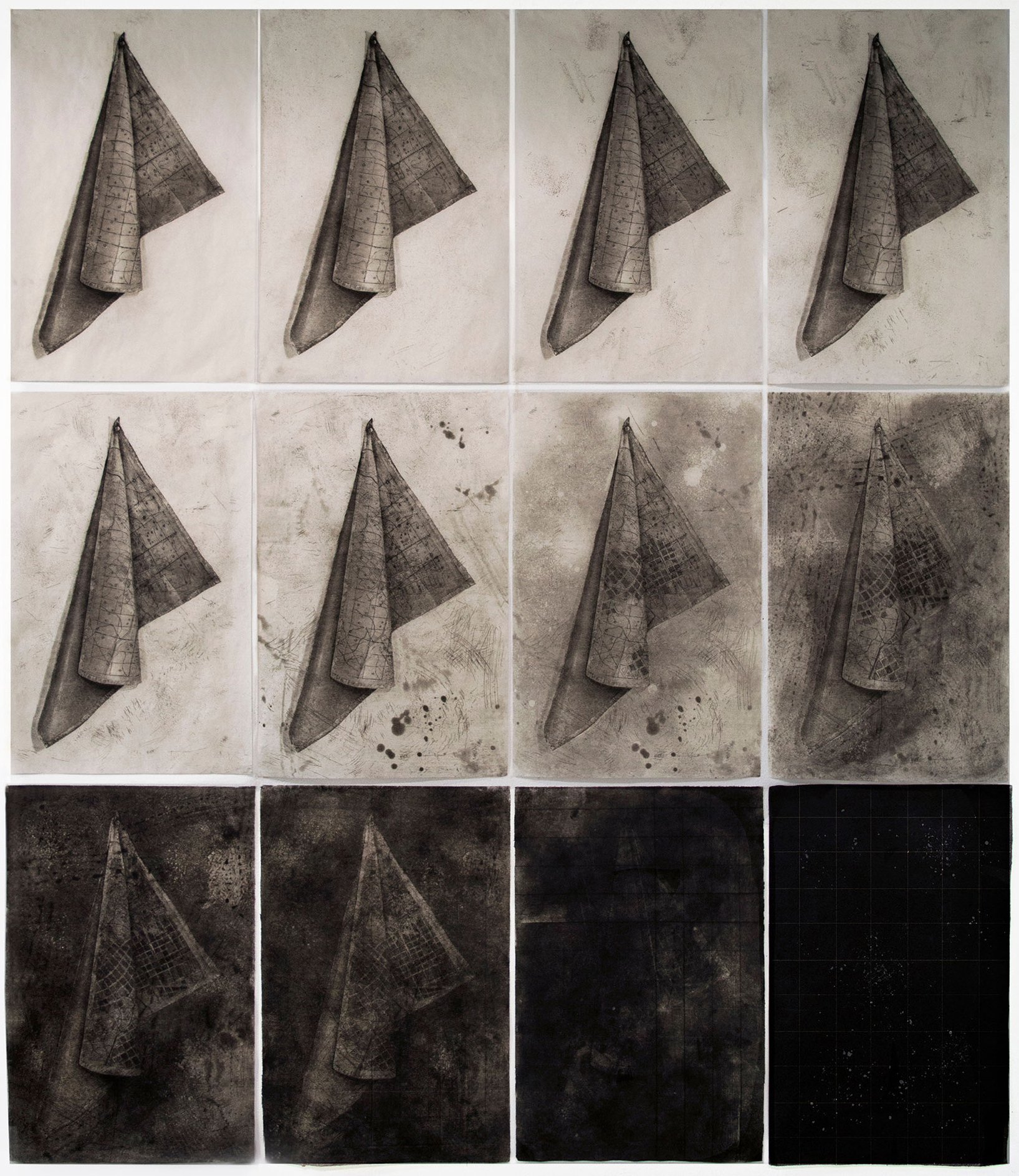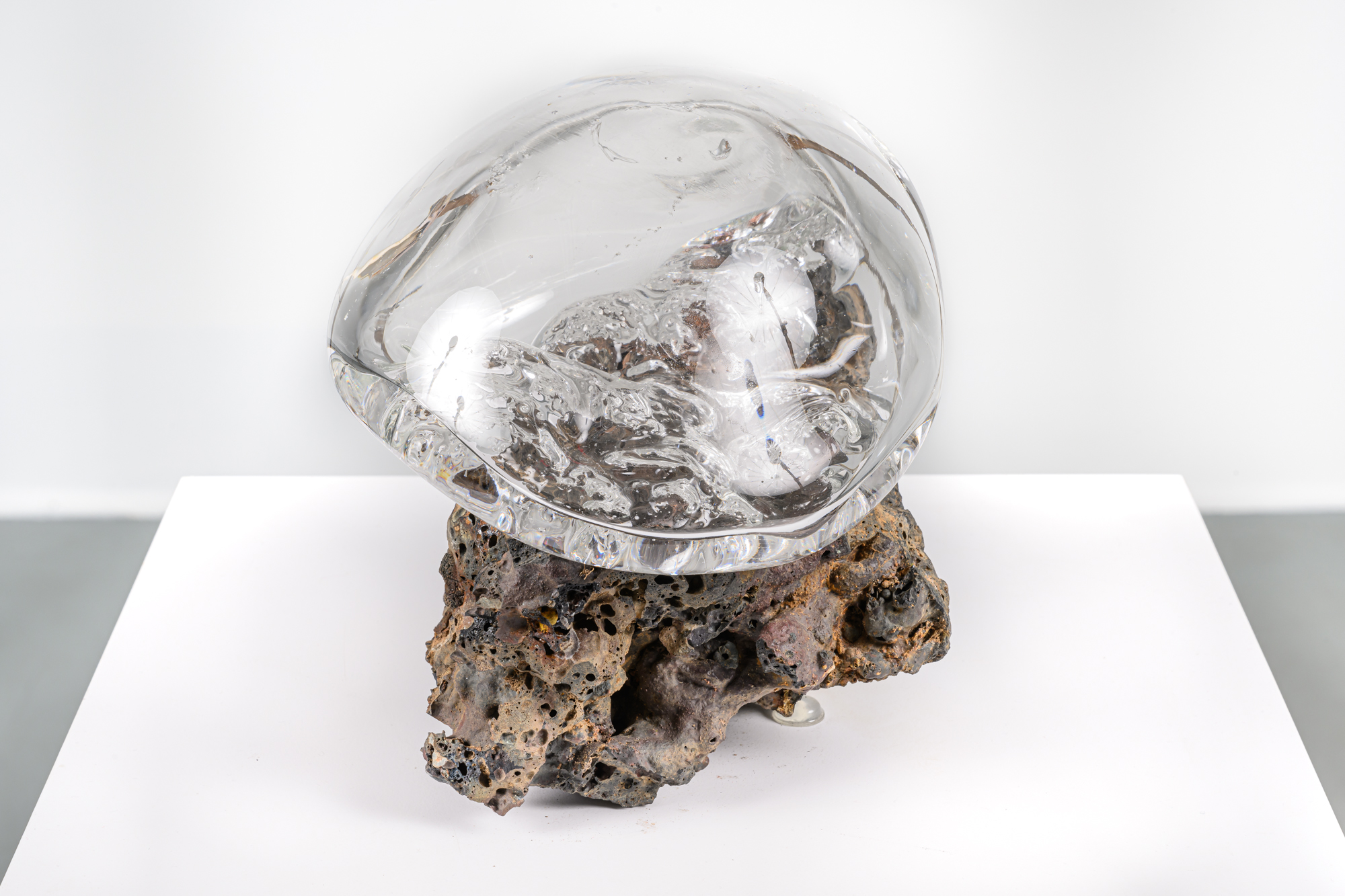Gary Burnley: Caste
Ranran Fan: Pressing Matters 按压即可
Natalia Mejía Murillo: Between Emergency and Imminence
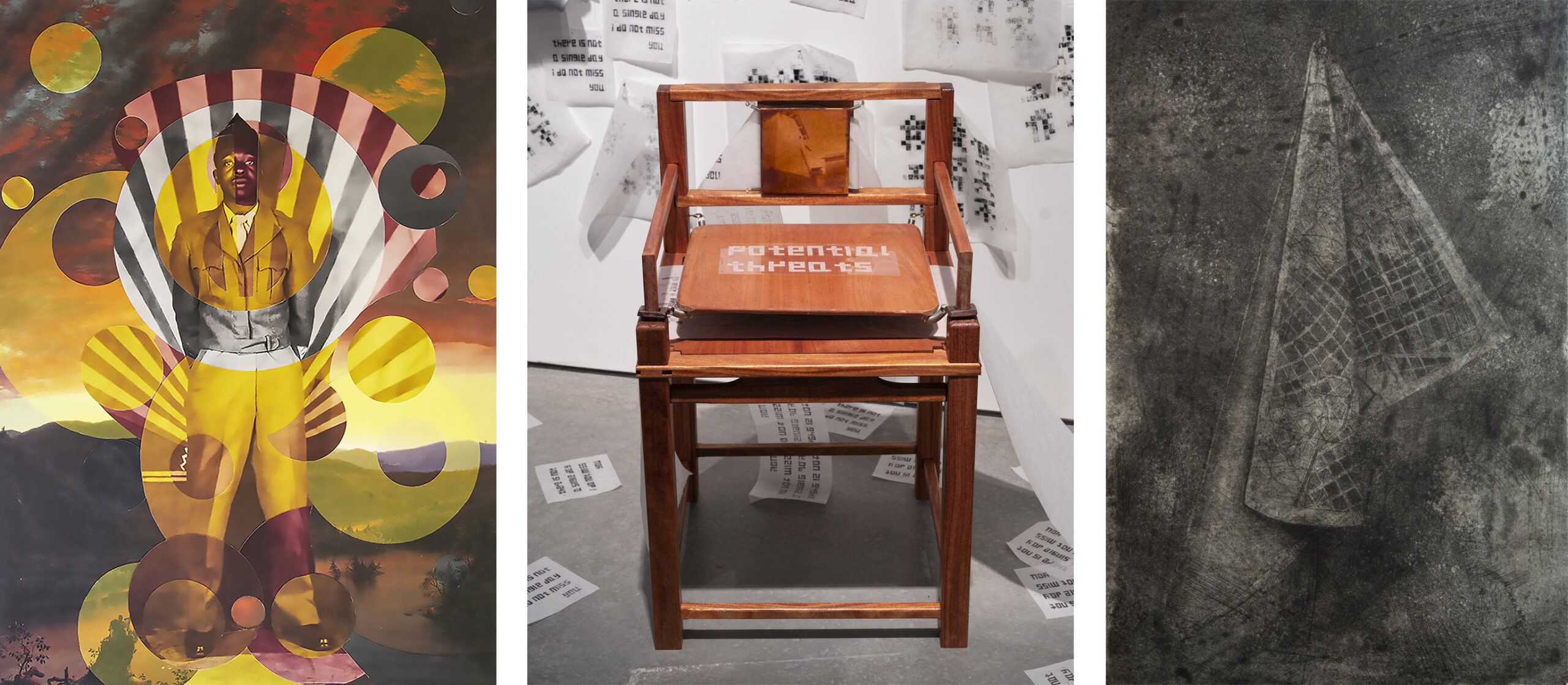
January 19 – March 30, 2024
The Print Center is pleased to present three new solo exhibitions of recent work by Gary Burnley, Ranran Fan and Natalia Mejía Murillo. The artists were awarded these exhibitions from the nearly 500 applicants to the 98th ANNUAL International Competition, juried by Dr. Kimberli Gant and Diana Gaston. The exhibitions were organized by guest curator Liz K. Sheehan.
Chosen from the ten Finalists, these three artists present works created using a wide range of techniques, from relief printing with eggshells, to furniture as printing press, to collage. Although visually quite different, the works of Gary Burnley, Ranran Fan and Natalia Mejía Murillo comprise personal quests for meaning within media, history and family, while leveraging the potential of print to reference communication across space and time.
– Liz K. Sheehan
Programs
All of The Print Center’s exhibitions and programs are free and open to the public.
Gallery Talk + Opening Reception
Thursday, January 18, 5:30 – 7:30pm
Artist Talk: Gary Burnley
Wednesday, February 21, 6pm
In-person and on Zoom
Performance + Artist Talk: Ranran Fan
Thursday, March 14, 6pm
In-person and on Zoom
Artist Talk: Natalia Mejía Murillo
Thursday, March 21, 6pm
On Zoom
Gary Burnley: Caste
The world of most Western museums was created for and is meant to be consumed by white audiences. The history of art has largely reduced "Others" to an uncomplicated characterization of a stranger in the world of the white man’s imagination, a shadowy figure without a gaze, a presence or a voice. Whiteness is, and has been, the exemplar of beauty, curated, maintained and preserved in museums, excluding non-whites except in reference to a vanishing past or less than desirable future.
I think of being an artist as a way of trespassing where historically "Others" have not been welcomed nor seen as belonging. If one of the primary functions of any image is to validate and give permanence to the world it describes and to the persons that inhabit that world, the physicality of collage allows me to, materially and psychologically, construct a world of my specification. A world of previously uninhabited territory where I am able to share context, content, dividends, features, traits, reason and consequences in the eye and mind of the viewer. A world where I am free to traverse time, conflate and query a variety of sources, upending expectations and modifying vernacular.
– Gary Burnley
Gary Burnley collages reproductions of historic portrait paintings with black and white photographs of African American subjects from yearbooks and family snapshots. The resulting images – what the artist terms “optical rivalries” – question how portraiture functions across lines of class, race, gender, medium and time. They also reveal parallels between the science of optics and the act of looking. Burnley’s work is rooted in his childhood in St. Louis of the 1950s and 60s, where he grew up as an African American male learning to navigate the “known and unknown worlds” that shifted from one block to another.
For decades, Burnley has worked with collage to metaphorically represent this continuous border crossing and personal self-construction. An interest in visual conflict and reconciliation led him first to build stereoscopes, which mimic the way the human eye processes information. Burnley’s devices feature images so dissonant as to defy optical blending, pointing to the ways in which the two figures can never occupy the same space, whether social or temporal. Following the stereoscopes, he began making collages to create “forced marriages” between disparate subjects that share a pose, glance, or similar physicality. He employs circular cutouts to reveal layers made distinct by their raw edges. These “peepholes” suggest temporal windows and, as he notes, “place the viewer outside, into a world I have created.” His pairings prompt us to examine our assumptions and biases, and advocate for an equal standard of beauty and humanity that lies beyond and beneath the visual. Read more in the Gallery Notes.
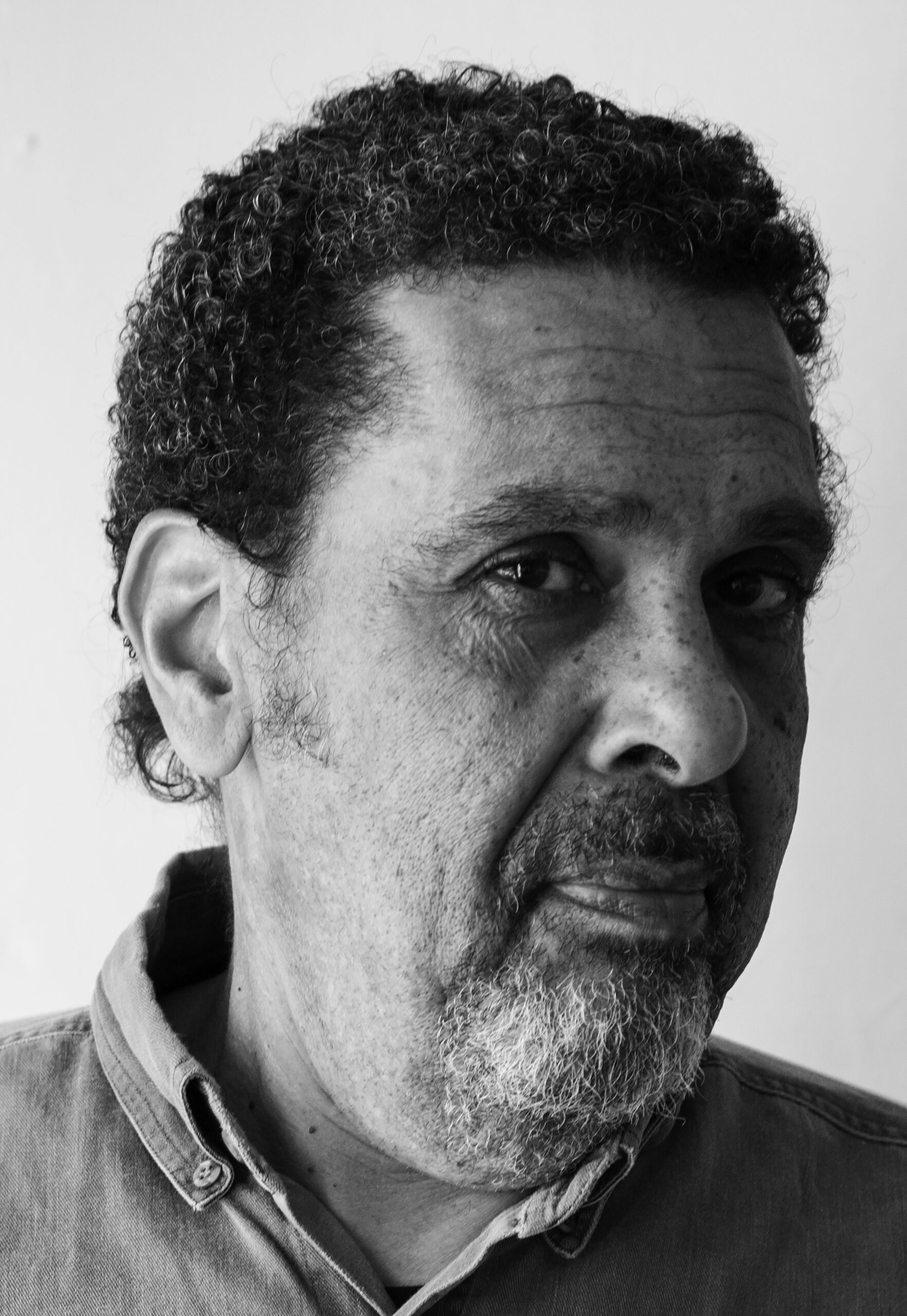
Gary Burnley (born St. Louis, MO; lives Ridgefield, CT) received a BFA from Washington University, St. Louis and an MFA from Yale University, New Haven, CT. Selected solo and group exhibitions include Amarillo Art Museum, TX; Museum of Fine Arts Houston, TX; Ogden Museum, New Orleans, LA; Aperture Gallery, Artists Space, Leo Castelli Gallery, Elizabeth Houston Gallery and Holly Solomon Gallery, all New York, NY; Blue Sky Gallery, Portland, OR; Queens Museum, NY Candela Gallery, Richmond, VA; Alice Austen House Museum, Staten Island, NY; Hansen-Fuller Gallery, San Francisco, CA; and Hudson River Museum, Yonkers, NY; as well as SALON, Florence, Italy; and Tbilisi University, Georgia. Burnley received a John Simon Guggenheim Memorial Fellowship in 2022 and his work is included in collections such as: Bard College, Annandale-on-Hudson, NY; Lehigh University, Bethlehem, PA; Weatherspoon Art Museum, University of North Carolina, Charlotte; Hunter Museum of American Art, Chattanooga, TN; Museum of Fine Arts Houston; Candela and Virginia Museum of Fine Arts, both Richmond; and Light Work, Syracuse, NY.
Ranran Fan: Pressing Matters 按压即可
A self-described “practical person” with a background in science, Ranran Fan builds devices that present solutions to daily problems and respond to personal trauma. Multi-media and interactive works explore the print process as a tool for communicating emotions that defy verbalization, including shame, anxiety, heartbreak and paranoia. In concept and execution, much of Fan’s work relates to the fear of being deported while living in the United States on a temporary visa, and therefore is often built for portability - easily disassembled, packed and shipped, in case they need to leave quickly. Many of Fan’s devices are also intended to self-soothe, and the gallery is arranged to feel like a comfortable living space to similarly put visitors at ease. It is populated with common materials and objects that appear domestic but have been altered to generate new functions. Fan employs humor and absurdity to draw the audience close, attempting to communicate while learning to cope with pressing matters.
Fan’s work challenges social systems and prejudices while also making connections between themselves and the viewer. “In many situations,” the artist has said, “communicating without verbal language can be effective as a way of taking a stand.” Instead, Fan relies on gesture, performance and text, written in a distinctive font that serves as an example of the layered metaphors in their work. Called “Wrong R” or 口 in Chinese, the character is “a shape of mouth, outlet, entry…it is pixel…it emphasizes the gap instead of connection.” This dichotomy runs throughout the exhibition, moving between intimacy and politics, confidence and uncertainty, humor and sadness. Read more in the Gallery Notes.
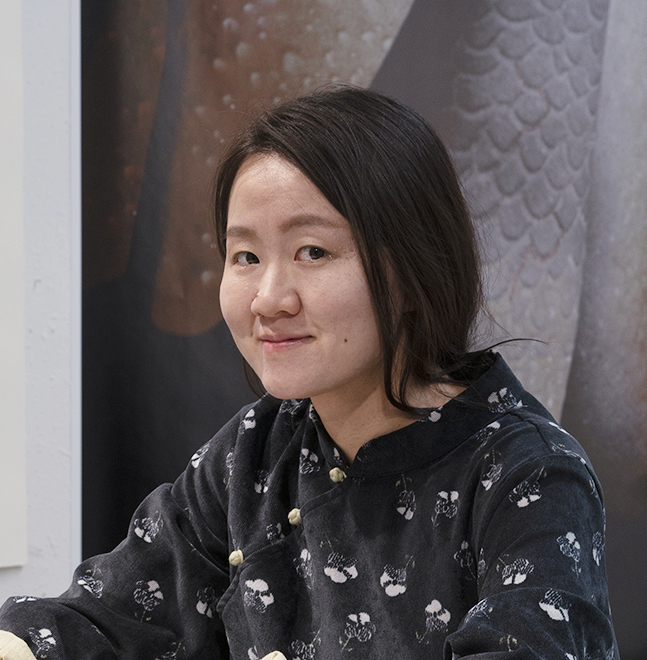 Ranran Fan (born China; lives Denton, TX) works across print, new media, installation and performance. They earned a BS in biology in Hong Kong, a BFA from the School of the Art Institute of Chicago, IL; and an MFA in Studio Art from the University of New Mexico, Albuquerque. Their work has been exhibited at Tamarind Institute, Albuquerque; Academy Art Museum, Easton, MD; Hallie Ford Museum of Art, Salem, OR; Santa Fe Art Institute and SITE Santa Fe, both NM; as well as OCT Contemporary Art Terminal, China; and Incheon Marine Asia Photography and Video Festival, South Korea. Fan is an Assistant Professor of New Media Art, University of North Texas, Denton.
Ranran Fan (born China; lives Denton, TX) works across print, new media, installation and performance. They earned a BS in biology in Hong Kong, a BFA from the School of the Art Institute of Chicago, IL; and an MFA in Studio Art from the University of New Mexico, Albuquerque. Their work has been exhibited at Tamarind Institute, Albuquerque; Academy Art Museum, Easton, MD; Hallie Ford Museum of Art, Salem, OR; Santa Fe Art Institute and SITE Santa Fe, both NM; as well as OCT Contemporary Art Terminal, China; and Incheon Marine Asia Photography and Video Festival, South Korea. Fan is an Assistant Professor of New Media Art, University of North Texas, Denton.
Natalia Mejía Murillo: Between Emergency and Imminence
Natalia Mejía Murillo’s practice is a cartography exercise, combining printed maps with glass, branches and other fragile organic materials in installations that symbolize and perpetuate the human drive to chart the unknown. Trained as a printmaker and influenced by the imagined worlds of writers Jorge Luis Borges and Italo Calvino, poetry and materiality hold equal importance. Pushing the boundaries of traditional printmaking, she experiments with “the essential act of touch, the trace that a body leaves on another body” common to printmaking and sculpture.
Like Borges’s absurdist short story “On Exactitude in Science,” which describes the most perfect map ever made: one so exact that it grew to the same size as its territory, Mejía’s practice rests on the creative freedom offered by the idea that a practical map is inherently abstract and fictional. In her hands, systems of measurement and navigation – from the earliest tools made from bone to the most sophisticated digital processes – become creative metaphors that can transport us to imagined realities. Like ancient maps that offered the promise of unknown lands, Mejía restores the sense of wonder and beauty to the object itself, “to create images and metaphors that relate our place on earth and how we perceive and interpret what we see far away in the sky.” Read more in the Gallery Notes.
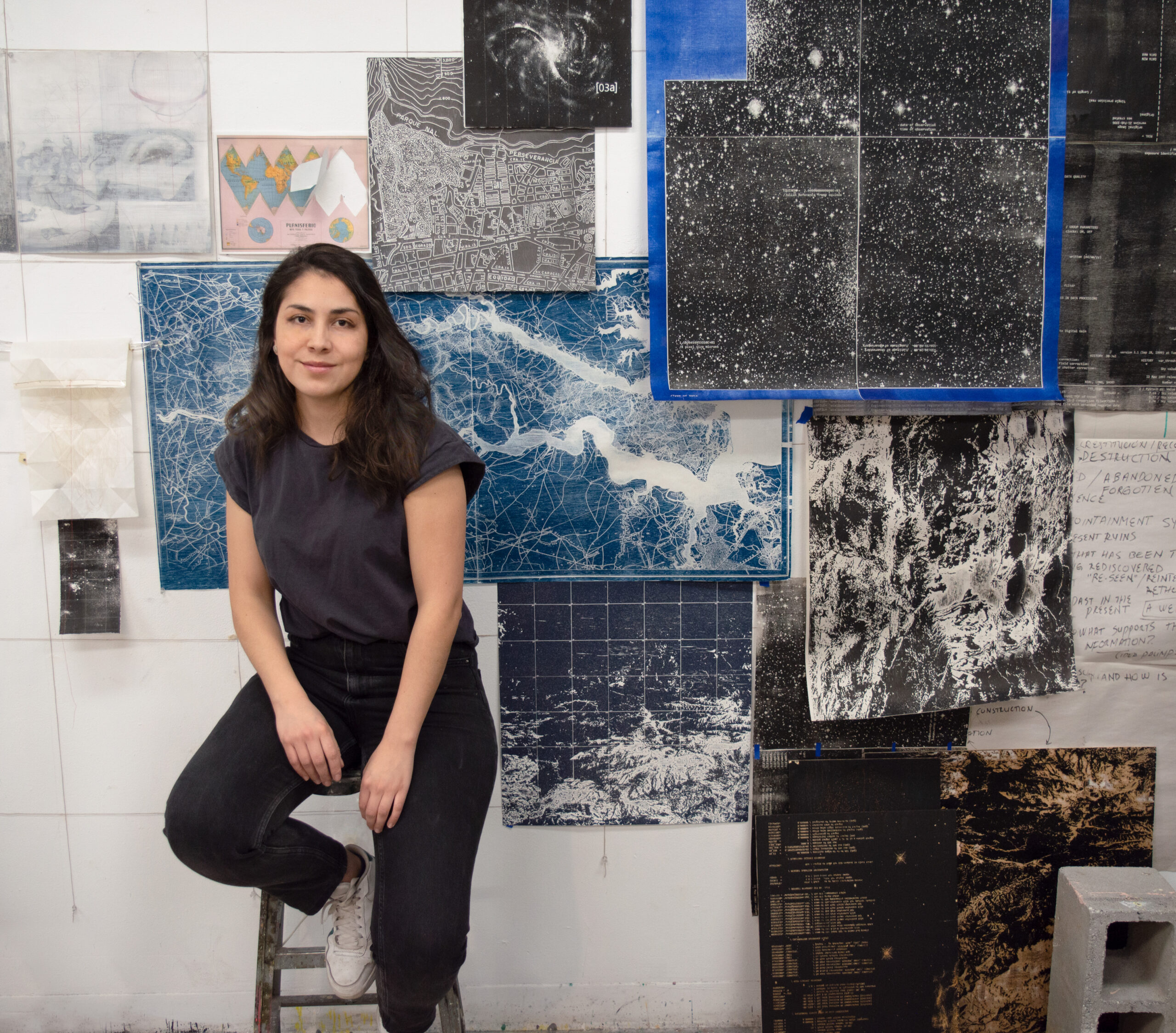 Natalia Mejía Murillo (born Colombia; lives Doha, Qatar) has a BFA and an MA in the History and Theory of Art from the National University of Colombia, Bogotá; and an MFA in painting and printmaking from Virginia Commonwealth University, Richmond. She has had artist-residencies including: Hello New York! through the Curatorial Program for Research, New York; MASS MoCA, North Adams, MA; Tajo Taller and Saenger Galería, Mexico City; Ellis-Beauregard Foundation, ME; and Fundació Miró Mallorca and Casa de Velázquez, Spain. Mejía has received awards from the Kunstmuseum Reutlingen, Germany and the Ministry of Culture of Colombia – México (FONCA), among others. She has been on the faculty of the National University of Colombia and Pontificia Universidad Javeriana, both Bogotá, and is an Assistant Professor at VCUArts, Qatar.
Natalia Mejía Murillo (born Colombia; lives Doha, Qatar) has a BFA and an MA in the History and Theory of Art from the National University of Colombia, Bogotá; and an MFA in painting and printmaking from Virginia Commonwealth University, Richmond. She has had artist-residencies including: Hello New York! through the Curatorial Program for Research, New York; MASS MoCA, North Adams, MA; Tajo Taller and Saenger Galería, Mexico City; Ellis-Beauregard Foundation, ME; and Fundació Miró Mallorca and Casa de Velázquez, Spain. Mejía has received awards from the Kunstmuseum Reutlingen, Germany and the Ministry of Culture of Colombia – México (FONCA), among others. She has been on the faculty of the National University of Colombia and Pontificia Universidad Javeriana, both Bogotá, and is an Assistant Professor at VCUArts, Qatar.
